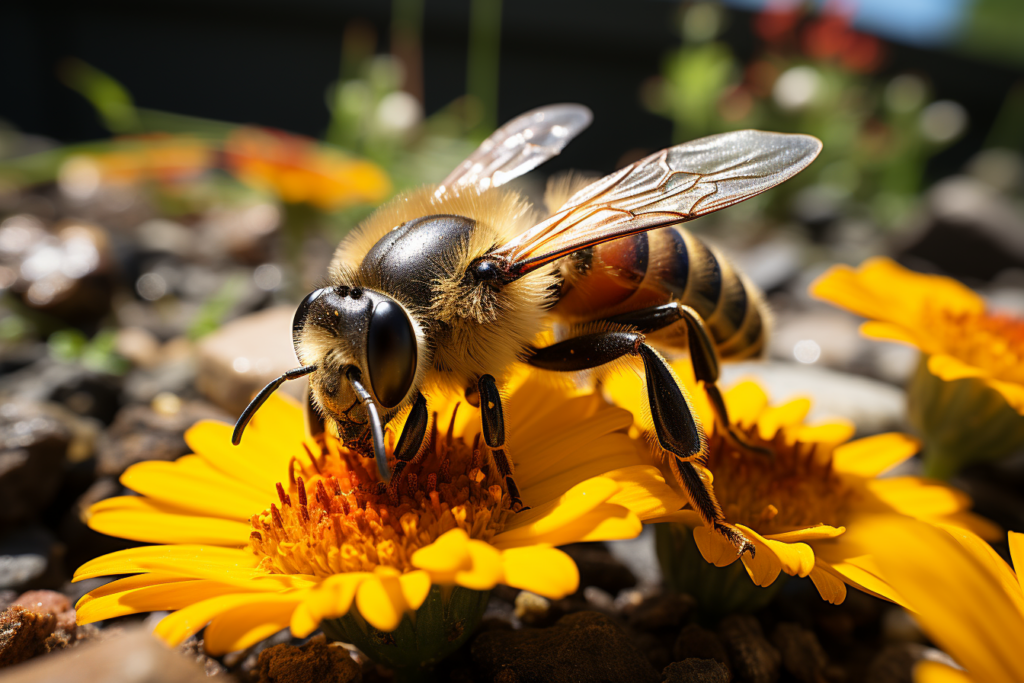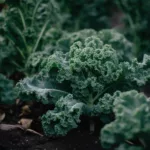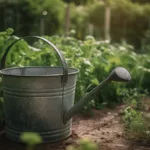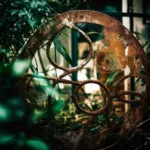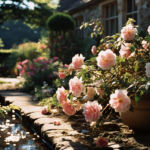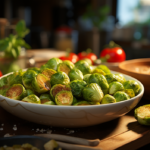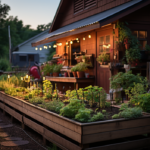Table of Contents
Hey there, gardening enthusiasts! Do you have a luscious kitchen garden but struggle with low crop yields? The answer may be simpler than you think. Pollinators are a crucial part of the gardening ecosystem and can make all the difference when it comes to a successful harvest. But how do you attract these buzzworthy helpers to your garden? Fear not, for we’ve compiled five easy tips to help you do just that. From planting diverse flowers to using organic gardening techniques, these simple and effective strategies will help you create a thriving garden filled with pollinators. So grab your gardening gloves and let’s get started!
Plant Diverse Flowers
One of the most effective ways to attract pollinators to your kitchen garden is by planting a diverse range of flowers. Bees, butterflies, and other pollinators are naturally drawn to colorful blooms, and having a variety of flowers will help attract a wider range of these beneficial insects.
Here are some tips to help you plant diverse flowers in your garden:
- Choose Native Plants – Native plants are an excellent choice because they are adapted to your local ecosystem and provide the best food source for native pollinators.
- Use a Variety of Colors – Pollinators are attracted to a range of colors, so it’s best to plant flowers in a range of colors. Aim for flowers in shades of blue, purple, pink, and yellow.
- Plant in Clusters – Planting flowers in clusters helps pollinators easily find your garden and ensures that there is enough nectar and pollen to sustain them.
- Focus on Blooming Time – Pollinators need a consistent food source, so it’s important to plant flowers that bloom at different times of the year. This is especially important in the spring when many pollinators are emerging from hibernation and need a food source.
- Consider Pollinator-Friendly Plants – Certain plants, such as milkweed and sunflowers, are particularly beneficial to pollinators. Consider including these plants in your garden to attract more pollinators.
By planting diverse flowers in your kitchen garden, you’ll be creating a haven for pollinators and increasing your chances of a successful harvest. Remember to choose native plants, plant in clusters, and focus on blooming times, and you’ll be well on your way to a thriving garden filled with busy bees and butterflies.
Provide Water Sources
When it comes to attracting pollinators to your garden, it’s not just about flowers. Pollinators also need a water source. Providing these sources can be as simple as filling a shallow dish with water and placing it in your garden. Here are the top reasons why providing water sources is important for pollinators:
- It prevents dehydration: Like all living organisms, pollinators need water to survive. Providing them with a shallow water dish ensures their survival, especially during the warmer months when they may struggle for hydration.
- It attracts more pollinators: By providing a water source, you’ll attract a wider variety of pollinators to your garden, including bees, butterflies, and hummingbirds. As a result, you’ll create a more biodiverse ecosystem that promotes plant health and fertility.
- It’s easy to maintain: Providing water sources for pollinators is a straightforward task and requires very little maintenance. All you need to do is ensure that your water dish is full and clean.
So, how do you provide water sources for pollinators? Here are some tips:
- Use a Shallow Dish: Fill a shallow dish with water and place it in your garden. The dish should be shallow enough to prevent pollinators from drowning.
- Add Pea Gravel: Adding pea gravel to the dish can provide a landing spot for butterflies and bees to rest while they drink. This also makes it easier for them to access the water without accidentally falling in.
- Change the Water Regularly: Stagnant water can become a breeding ground for mosquitoes. Changing the water in your dish regularly ensures that you’re providing clean water for your pollinators.
By providing a water source for pollinators, you’re not only creating a more hospitable environment, but you’re also increasing your garden’s productivity – a win-win for both you and your garden visitors.
Use Organic Gardening Techniques
Pollinators prefer to visit gardens that are free of toxic chemicals and pesticides. By using organic gardening techniques, you can create an environment that is not only beneficial for pollinators but also your plants and overall health too. Here are some organic gardening techniques that can help attract pollinators:
- Avoid using synthetic pesticides and chemicals in the garden. Instead, opt for natural alternatives, such as homemade insect sprays, neem oil, or soap spray to keep pest problems under control.
- Use companion planting to encourage pollinators to visit your garden. Companion planting is a strategy where plants that have complementary properties are grown together. For example, planting marigolds around your vegetable plants can help repel pests and attract beneficial insects such as hoverflies and lacewings.
- Incorporate compost into your soil. Compost is a powerful source of nutrients and beneficial microorganisms that help create a healthy soil ecosystem. Healthy soil is critical as it supports strong plant growth, nutrient uptake and overall plant health, providing a sustainable environment for pollinators.
- Rotate your vegetables. Crop rotation is a technique used to change where you plant different crops each year. It is essential because it helps to break pest and disease cycles and improve the soil structure and fertility of your vegetable beds. When you rotate crops, the beneficial insects and natural predators can establish in a specific area, increasing biodiversity that supports pollinators and beneficial insects.
By following some of these organic gardening techniques, you can help attract pollinators to your garden, creating a vibrant and beautiful space for both you and beneficial insects.
Incorporate Different Textures and Colors
Incorporating different textures and colors is one of the most effortless and most visually appealing ways to attract pollinators to your kitchen garden. The key is to plant an array of flowers that will not only provide food for a variety of pollinating creatures but also capture their attention with their vibrant colors and unique textures.
Here are some tips to incorporate different textures and colors in your garden to attract pollinators:
Choose different colors: Diversity in color can attract various pollinators. Butterflies, for example, are attracted to bright yellows, blues, and purple hues, while hummingbirds are drawn to red and pink flowers. Bumblebees are attracted to pink shades, while other bees prefer blues and purples.
Mix textures: Different textures in your garden can attract various pollinators. Some prefer a soft and fluffy texture, while others prefer a more waxy texture. Flowers with tubular shapes, for example, are more likely to attract hummingbirds, bees, and butterflies, while those with multiple petals and frills at the edges are more appealing to bees.
Choose different bloom times: Incorporating plants with different bloom times creates an alluring garden for pollinators all year round. You can add some late bloomers to your garden, such as aster and goldenrod, which provide nutrients to bees before the winter season.
Create a floral arrangement: Creating a floral arrangement arranged by color and texture will attract pollinators too. Arrange flowers such that the tall flowers are at the back, medium flowers are in the middle, and short flowers are at the front of your garden.
By using different textures and colors, you’ll create a garden that pollinators would love to visit. So, don’t be afraid to mix it up, be creative, and have fun. Creating a garden full of vibrant colors and unique textures is not a complicated task but requires some research and imagination. It will not only attract pollinators but also create an aesthetically pleasing garden to enjoy year-round.
Create a Sheltered Habitat
Attracting pollinators to your kitchen garden doesn’t have to be a daunting task. In fact, creating an environment that is welcoming to these creatures is easier than you may think. A sheltered habitat is one of the critical aspects that you should consider when trying to attract pollinators to your kitchen garden.
The following are some useful tips that could help you create a sheltered habitat for pollinators:
Provide shelter
Pollinators need shelter where they can hide from predators, rest and sleep. Some materials that can help provide shelter include:
- Dead wood
- Stones
- Dried leaves
- Grass clippings
Build nesting habitats
Different pollinators have different nesting requirements. Depending on the pollinator you want to attract, you can consider creating some of the following nesting habitats:
- Create habitats for birds; build birdhouses with wider openings to attract birds that feed on pollinators
- Build a nest box for bees
- Build a butterfly house
Avoid overly manicured lawns
Overly manicured lawns could potentially harm pollinators by removing their habitat. Allow some natural areas to grow where pollinators can live comfortably.
Limit pesticide use
Pesticides may be a crucial aspect of gardening, but they can harm pollinators. Limit their use and use more environmentally friendly pest control methods like creating barriers, using pheromone traps, and using companion planting to naturally repel pests.
Creating a sheltered habitat in your kitchen garden will go a long way in attracting pollinators. A sheltered area provides a safe environment where pollinators can lay their eggs and rest, which will increase their lifespan and productivity. Incorporating these tips will make your garden a welcoming space for pollinators, thereby improving your crop yields.
Conclusion
In conclusion, attracting pollinators to your kitchen garden is a simple and effective way to ensure a bountiful harvest. By planting diverse flowers, using organic gardening techniques, providing water sources, incorporating different textures and colors, and creating a sheltered habitat, you can do your part in fostering a thriving ecosystem in your backyard. And the best part? Not only will you be helping your garden flourish, but you’ll be providing a safe haven for the bees, butterflies, and other pollinators that are essential to our planet’s health. So why not give it a try and see the difference it can make in your garden? Your taste buds (and the environment) will thank you for it!

